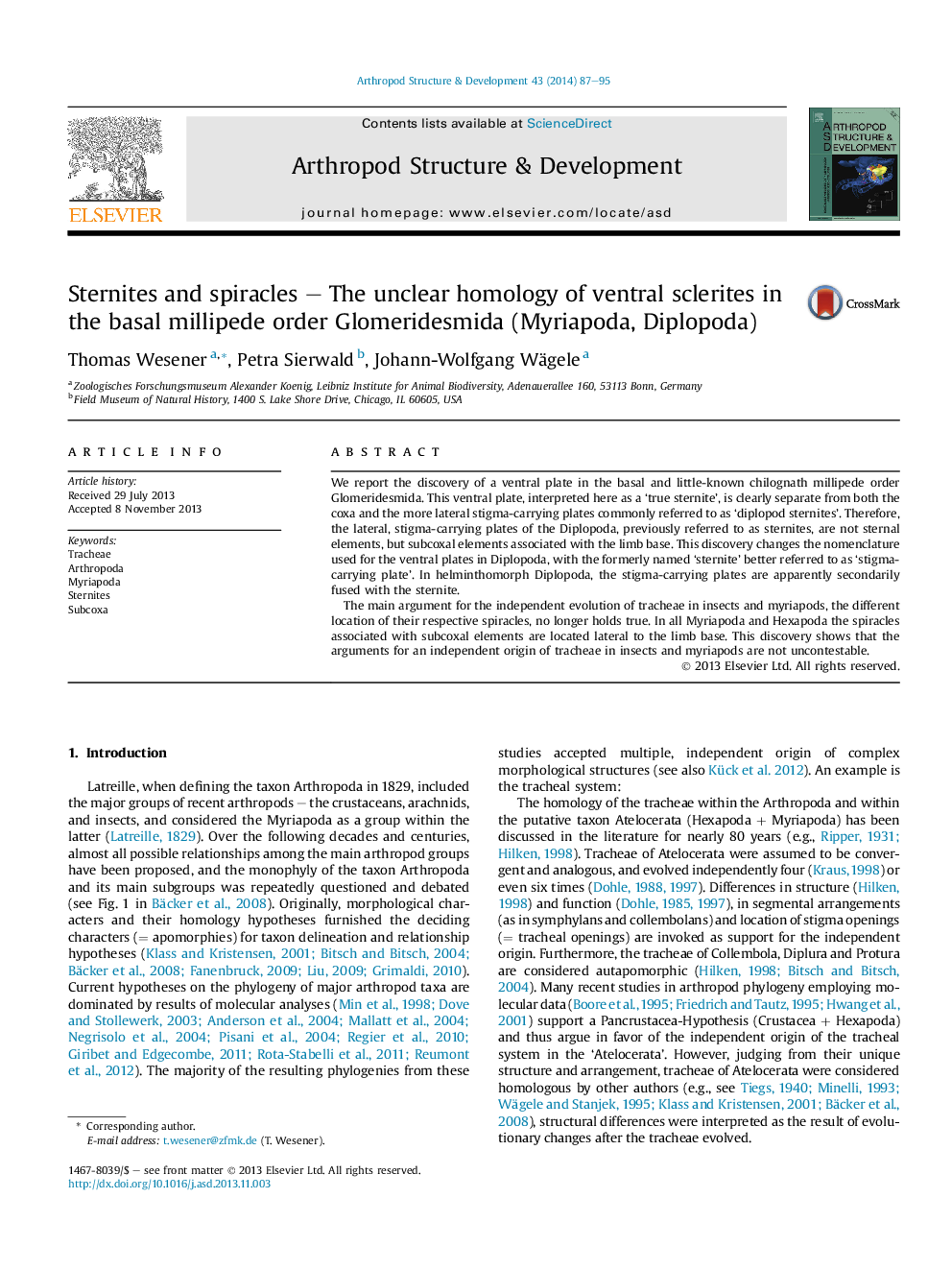| Article ID | Journal | Published Year | Pages | File Type |
|---|---|---|---|---|
| 2778661 | Arthropod Structure & Development | 2014 | 9 Pages |
•A ventral sclerotized plate is discovered in the millipede taxon Glomeridesmida.•Central plate represents the true sternite in Diplopoda.•Plates carrying the stigma-opening in Diplopoda are not true sternites.•Plates carrying stigma-opening in Diplopoda are subcoxal elements like in Hexapoda.•This weakens one argument against the homology of the tracheae in Myriapoda and Hexapoda.
We report the discovery of a ventral plate in the basal and little-known chilognath millipede order Glomeridesmida. This ventral plate, interpreted here as a ‘true sternite’, is clearly separate from both the coxa and the more lateral stigma-carrying plates commonly referred to as ‘diplopod sternites’. Therefore, the lateral, stigma-carrying plates of the Diplopoda, previously referred to as sternites, are not sternal elements, but subcoxal elements associated with the limb base. This discovery changes the nomenclature used for the ventral plates in Diplopoda, with the formerly named ‘sternite’ better referred to as ‘stigma-carrying plate’. In helminthomorph Diplopoda, the stigma-carrying plates are apparently secondarily fused with the sternite.The main argument for the independent evolution of tracheae in insects and myriapods, the different location of their respective spiracles, no longer holds true. In all Myriapoda and Hexapoda the spiracles associated with subcoxal elements are located lateral to the limb base. This discovery shows that the arguments for an independent origin of tracheae in insects and myriapods are not uncontestable.
